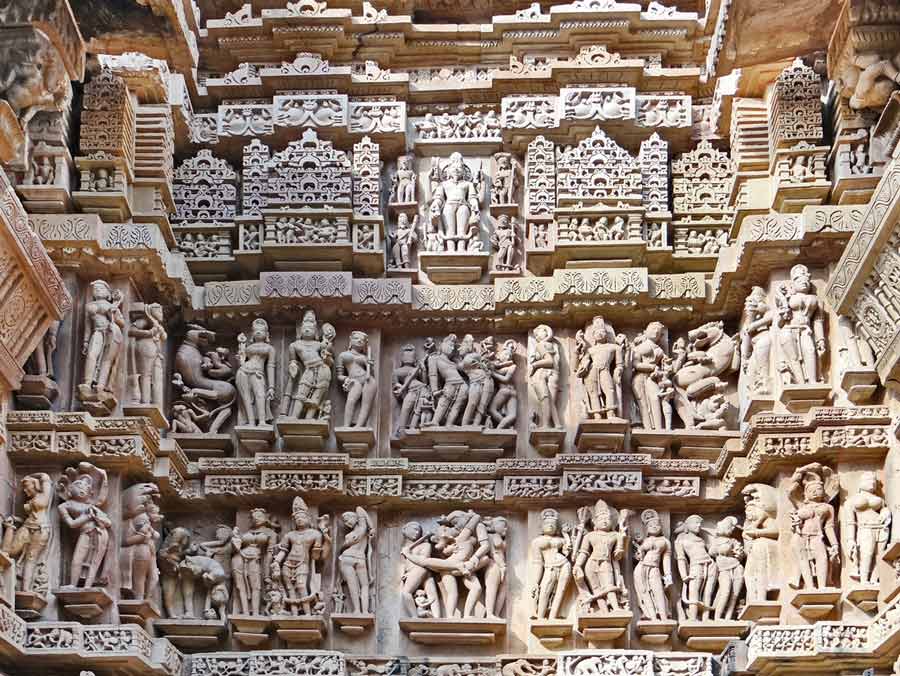
Editor's Note:
Lorin received his Ph.D. in Social Science from the University of California at Irvine in 1987. His doctoral dissertation was on the language meditators
come up with to describe their experiences and the maps they make to navigate their inner worlds. His Master's Degree work focused on the hazards of
meditation and the crisis points in a meditator's development.
The Vijnana Bhairava Tantra is a classic meditation text that describes 112 doorways for entering divine awareness right here in the midst of everyday
life. Lorin was introduced to the Vijnana Bhairava Tantra in 1968 while working in a physiology lab at the University of California that was doing research
on meditation. It was love at first listening, a love that continues to this day, this moment.
The Vijnana Bhairava Tantra appeared in Kashmir around 800 AD, as far as we can tell. The tantra is set as a conversation between The Goddess Who is the
Creative Power of the Universe, and the God who is the Consciousness That Permeates Everywhere. For short, they call each other Devi and Bhairava, or
Shakti and Shiva. They are lovers and inseparable partners, and one of their favorite places of dwelling is in the human heart. The text is friendly,
inviting us in to play.
Lorin’s version of the Vijnana Bhairava Tantra is called The Radiance Sutras, published by Sounds True (2014). Check it out at radiancesutras.com
Click here to read Part One
Click here to read Part Two
We can listen to the Vijnana Bhairava Tantra as a love song between The Goddess and her Lover. She is the dynamic creative power of the universe.
She is Shakti, śakti – “power, ability, strength, might, effort, energy, capability, faculty, skill.” He is Shiva, the Consciousness That Embraces
Her. They are lovers and inseparable partners and one one level their song is the entire universe, including these bodies we are inhabiting.
Shakti and Shiva are singing to each other and we are invited to attend and be moved by what we hear. “Meditation” is a name we give to this process of
paying attention. When we meditate, we are engaging with the dynamic regenerative evolutionary creativity of life, for Shakti is power and skill in the use
of power. If we think of meditation only as “calming down,” and shutting off the flow of desire, we miss out on 99% of the interesting activations that can
occur. Meditation can be enjoyed as a process of immersing ourselves in the thrill of being alive. In this immersion in Shakti, we are submitting to being
tuned up like a musical instrument, so that we can live life to the fullest.

The Temple of Lakshmana (Khajurâho)
Sanskrit is cherished for its ability to speak on many levels simultaneously and is famous for its rich polysemy, where a word can have “many
meanings,” opposed to monosemy, having just one meaning. One way these layers of meaning are indicated is through rupaka “figurative,
metaphorical” illustrations in the word definitions. The metaphors in the definitions are intended to be useful. Throw yourself in to the imagery, and let
it tell you stories. The images are animated literalisms, like cartoons. They have evocative power, and point to something alive, a craft knowledge.
One of the verses Shiva sings to Shakti goes like this:
sarva sroto nibandhena prāṇa śakty ordhvayā śanaiḥ
pipīla sparśa velāyām prathate paramaṁ sukham
If we ask the pundits and rishis to cover their ears and jump in the Ganges or Indus (whichever is closer) we can approximately spell out the sounds:
sarva srotah ni-bandhena praana–shakti–oordhvayaa shanaih
pipeela sparsha velaayaam prathate paramam sukham
Looking in the Monier-Williams Sanskrit-English Dictionary we see a rich spectrum of images. The definitions in bold are ones that seem to want to come out
and play today and are jumping off the page.
Sarva
- whole, entire, all, everything, all together, completely, in all parts, everywhere.
Srotas
- the current or bed of a river, a stream, torrent. Rushing water. The channel or current ofnutrition in the body. An aperture in the human or animal body. An organ of sense. Lineage, pedigree.
Nibandha
- binding, tying, attachment to, intentness on, basis, root, origin, a grant of property, any literary composition or work, song, singing.
Bandha
- binding, tying, a bond. A bandage. Damming up (a river). Connection or intercourse with. Putting together, uniting,
contracting, combining. Joining (the hollowed hands). A deposit, pledge. Any configuration or position of the body (especially of the hands and feet). A
particular mode of sexual union (there are said to be 16, 18, 36, or even 84). Building of a bridge. Directing the mind. Obtainment of a body. A sinew,
tendon. The body. In philosophy, mundane bondage, attachment to this world. The arrangement of a stanza in a particular shape. Arrangement of musical sounds.
Prana
- filled, full, the breath of life, respiration, spirit, vitality, vigor, vital air (three or five in number - prana, apana, vyana,
samana, udana), breath as a sign of strength, energy, power, poetical inspiration.
Shakti
- power, ability, strength, might, effort, energy, capability, skill, effectiveness of a remedy, regal power, the energy
or active power of a deity personified as his wife. The power or signification of a word, the creative power of imagination (of a poet).
prāṇaśakti - a particular Shakti of Vishnu. Elan.
Urdhva
- rising or tending upwards, raised, elevated, erected, erect, upright, high, above, higher.
Sanais
- quietly, softly, gently, gradually, alternately.
Pipela
- ant.
Sparsha
- touching, the sense of touch, contact, the quality of tangibility. Feeling, sensation.
Vela
- limit, boundary, end, distance, boundary of sea and land, limit of time, period, season, time of day,
opportunity, leisure, tide, flow.
Prath
- to spread, extend, unfold, become known or celebrated, to come to light, appear, arise, to occur to the mind, reveal, shine upon, give light to.
Param
- far, distant, remote in space, opposite, farther than, beyond, on the other or farther side of, previous in time, former, ancient, past.
Later, future, next. Following, succeeding, subsequent. Final, last. The Supreme or Absolute Being, the Universal Soul. The highest point
or degree. The wider or more extended meaning of a word.
Sukha
- originally applying to chariots. "Having a good axle-hole," running swiftly or easily. Agreeable, mild, comfortable, happy. Prosperous. Virtuous. In
music, a particular mūrchanā or style of music. One of one of the 9 Shaktis of Shiva. Pleasure, happiness, joy, delight in.
Here is one way of listening to these thirty-two syllables of densely encoded information:
Rivers of power flowing everywhere.
Fields of magnetism relating everything.
This is your origin. This is your lineage.
The current of creation is right here,
Coursing through subtle channels,
Animating this very form.
Follow the gentle touch of life,
Soft as the footprint of an ant,
As tiny sensations open to vastness.
Power sings as it flows,
Electrifies the organs of sensing,
Becomes liquid light,
Nourishes your entire being.
Celebrate the boundary
Where streams join the sea,
Where body meets infinity.
This is the version of the verse in The Radiance Sutras. There are many other ways of receiving this verse, for the Sanskrit is engineered to be
evocative and fresh each time you hear it. The polysemy is not random, but full of practical experiential hints and tips for practice.
What I like to do when I approach a verse such as this is to memorize the sounds, and live with them like a song for a few weeks or a month. After awhile
the Sanskrit is pulsing in my body like a heartbeat, as if I am in the middle of a concert where a band is playing this verse. Gradually I become enchanted
by the dynamic power of the Sanskrit, and it takes on the hypnotic beauty of a well-crafted song. Simultaneously I hold the full semantic range of each
word in mind, both the dictionary listing as shown above, and the usage of each word in the Tantric literature. Usually the “secret Tantric” meaning of a
word is right there in the dictionary, but sometimes there are extended meanings and techniques that I find relevant.
Over a few weeks or months of listening to the Sanskrit in this way I generate fifty or more different versions of the verse, and then read them to women
yoga practitioners and let them tell me which ones are most evocative. Camille Maurine, my wife, dances each verse and reads it back to me, and with her
help I change the wording and phrasing and set aside most of the versions – not because they aren’t interesting, but because they are not as juicy. With
this verse, we happened to be at Bhakti Fest in Joshua Tree, and one morning there was a group of highly-tuned yoginis present: Melanie Foust, Denise
Kaufman, Courtney Buffington, Sarah Thompson, and Camille. They danced and chanted the verses, and over the course of the day the English version shown
above vibrated itself into form.
If we let polysemy take us in another direction, the verse is pointing to ways of evoking the experience of chills and tingles running up and down your
spine, as in sex, and any thrilling experience. Bandha refers to many types of bonding or connection and has a wide semantic field including: a
tendon, arranging a sequence of musical sounds, arranging the body during sex. The sense of bandha as “damming up a river” can refer to the way energy
builds and builds during lovemaking – you want to orgasm, every cell of your body is wanting to discharge, and you keep on letting the electricity
build up, until it explodes in a mind-blowing release. The subtle internal bandhas help to prolong the experience and allow the delicious energies
to permeate every cell until orgasm becomes cosmic. That would be a completely different version in English, another aspect of the Tantric revelation.